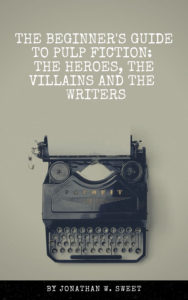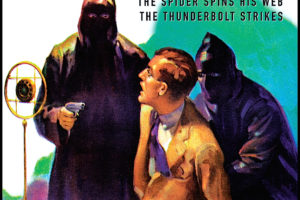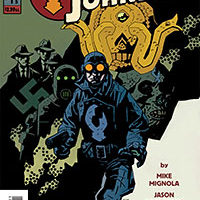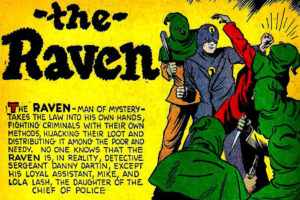 I always keep an eye out for non-fiction reference works on pulp fiction, and learned of a pair of works by Jonathan W. Sweet called The Beginner’s Guide to Pulp Fiction and published by his Brick Pickle Media. I was sent a copy of volume 2, after taking a look at it, I got volume 1.
I always keep an eye out for non-fiction reference works on pulp fiction, and learned of a pair of works by Jonathan W. Sweet called The Beginner’s Guide to Pulp Fiction and published by his Brick Pickle Media. I was sent a copy of volume 2, after taking a look at it, I got volume 1.
Volume 1 is subtitled “The Heroes, the Villains, and the Writers,” and as noted is meant as a “Pulp 101” work for those getting into the field. Which is fine. As someone who has worked to learn about the pulps, I’m not the main audience for this work, but I do look for such works to recommend to people getting into the pulp magazines, and I recommend this one.
We start off with a brief overview of the pulps. We could have spent more time on this, but what we get is good. We then have a section on the authors of the pulps, which covers about two-thirds of the volume. There are 70 or so authors given, in a range of genres. Only a few I was not familiar with, because they mainly wrote for detective and western pulps, which I’m not that knowledgable on. Some of the authors covered include Isaac Asimov, H. Bedford-Jones, Edgar Rice Burroughs, Lester Dent, J. Allan Dunn, Walter Gibson, Dashiell Hammett, Robert E. Howard, H.P. Lovecraft, Talbot Mundy, and Clark Ashton Smith.
Next up, we get a look at the hero pulps, focused on the ones who had their own pulps. So obviously The Avenger, Doc Savage, and The Shadow, and even some of the ones that only lasted one issue. Then the handful of villain pulps. Finally the heroes that did not get their own pulps, like Tarzan, John Carter, Zorro, and The Black Bat.
Finally, we get Lester Dent’s much-reprinted master plot. There is a short list of recommended reading and sources for new and reprinted works, though missing from this list are publishers like Bold Venture, Murania Press, Moonstone, Wildside Press, Fiction House/Pulpville, and Adventure House.
In reading this work, I did note a few errors, but these are minor and don’t detract from the overall work and wealth of information presented.
While this may not interest experienced pulp fans, as I noted, anyone getting into the field should get this. Being inexpensive, there’s no excuse not to get this work.




“The Writers Guide to Pulp FIction” and he covered less than 1% of the pulp magazines published. Even limiting yourself to heros and villians, the other 40,000 pulps were full of them. The hero puls were a niche market.
He didn’t limit himself to just the hero/villain pulps.
As I noted, in his author section he listed a wide range of authors including adventure, science fiction, detective, and western authors. Volume 2 covers more the broader world of pulps.
Hey, how come my link goes to Bold Venture Press? This kind of thing happens a lot. I’m beginning to get paranoid about it.